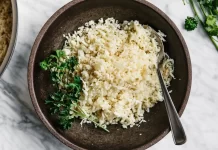Japanese chef knives, revered globally, have roots that delve deep into Japan’s rich cultural and artisanal heritage. Steeped in tradition, these knives are the culmination of centuries of craftsmanship where blacksmiths meticulously forged and honed blades to achieve perfection. Originally, these techniques were employed for creating samurai swords, which were symbolic of honor and precision. Over time, these methods evolved and shifted from the battlefield to the kitchen, leading to the creation of knives that could effortlessly slice through the thinnest sheets of fish for sushi and sashimi, or chop vegetables with unparalleled precision.
Enter the Gyuto knives — a brilliant embodiment of the East meets West in the realm of culinary tools. The word “Gyuto” literally translates to “cow sword,” reflecting its origins as a knife designed for cutting beef. However, its significance lies beyond its name. This knife is a seamless fusion of the Western chef’s knife’s design with the sharpness and thinness characteristic of Japanese chef knives. While it borrows the versatile shape of its Western counterpart, it retains the ultra-sharp edge and lightweight design native to Japanese traditions. Thus, the Gyuto knives stand as a testament to the harmony that can be achieved when two distinct culinary worlds intertwine, resulting in a tool of unmatched excellence in both form and function.
Table of Contents
What makes the Japanese chef knives so unique?
Japanese craftsmanship is not just a mere process; it’s an art form, a philosophy, and a testament to the dedication of generations of artisans. At the core of this ethos is the relentless pursuit of perfection. From the samurai sword-makers of feudal Japan to the master knife craftsmen of the modern era, this passion for excellence remains undiminished. Each stroke of the hammer, each fold of the steel, and each polish of the blade is imbued with a rich history and an unwavering commitment to quality.
Material selection is pivotal in this journey towards creating the perfect knife. Traditional Japanese chef knives primarily utilize high-carbon steel, prized for its unparalleled sharpness and edge retention. This steel, often combined with softer layers of metal, is painstakingly forged to produce a blade that’s both hard and flexible. The specific type of steel, such as the renowned VG-10 or the White and Blue steels, plays a vital role in determining the knife’s sharpness, durability, and ease of maintenance.
Furthermore, the choice of handle materials, from ho wood to magnolia, is not merely aesthetic. It ensures balance, longevity, and a comfortable grip, crucial for those wielding the knife for extended durations. In essence, every material chosen in the crafting of a Japanese chef knives is a conscious decision, underpinning its functionality and significance in the culinary world.
Deep dive into the Gyuto knives
The linguistic roots of the term ‘gyuto’ provide a fascinating glimpse into its purpose and evolution. Derived from two Japanese terms, ‘gyu’ signifying ‘beef’ and ‘to’ meaning ‘blade’ or ‘sword’, the nomenclature vividly paints the knife’s initial purpose – to slice through beef efficiently and gracefully. This etymological exploration is not just a study of words but is a window into the historical and culinary landscape of Japan.
Historically, Japan was not predominantly a beef-eating nation. However, as Western influences permeated Japanese culture in the 19th century, so did their culinary tastes. With the increasing demand for beef, there arose a need for a specialized tool that could effortlessly navigate through this unfamiliar protein. The Gyuto knives emerged in this backdrop, bridging the gap between Japanese precision and the Western demand for beef cuts.
But, as with many tools born out of necessity, the Gyuto knives potential were quickly recognized beyond its initial beef-cutting function. Its sharp, thin blade combined with a versatile profile made it adaptable, evolving it into an all-purpose knife. Over time, chefs began to appreciate its prowess, not just with beef but with vegetables, fish, and a myriad of other ingredients, solidifying its status as an indispensable tool in the global culinary arsenal.
The right tools take your chef skills to another level
The world of Japanese chef knife making is a symphony of tradition, precision, and artistry. Over centuries, Japanese craftsmen have nurtured and perfected a tradition that’s rooted deeply in the country’s history, drawing inspiration from the creation of legendary samurai swords. Each knife is not just a culinary tool but a testament to a craftsman’s dedication, patience, and commitment to excellence. These blades capture the very essence of Japan’s meticulous attention to detail and its unwavering pursuit of perfection. Now, imagine introducing this level of finesse into your culinary experience. Enter the Gyuto – a knife that encapsulates the best of Japanese craftsmanship and offers unparalleled versatility. Its razor-sharp edge, balanced weight, and ergonomic design make it a pleasure to wield. Whether you’re finely dicing vegetables, filleting a delicate piece of fish, or slicing through a succulent steak, the Gyuto responds with grace and precision, making every cut an exercise in culinary artistry.
For those truly passionate about their kitchen experiences, we invite you to view our specially curated collection of Gyuto knives. Each piece in this collection has been handpicked for its quality, heritage, and the story it tells. These are not just knives; they’re an inheritance of a timeless tradition, waiting to find a place in the heart of your kitchen. Yet, the Gyuto knives are just the tip of the iceberg when it comes to Japanese culinary genius. We encourage every culinary enthusiast to delve deeper, to explore the myriad of tools and techniques that originate from the Land of the Rising Sun. By embracing Japanese chef knives, you’re not just adopting tools, but also a philosophy, a dedication to the art of cooking that transforms every meal into a masterpiece.


















